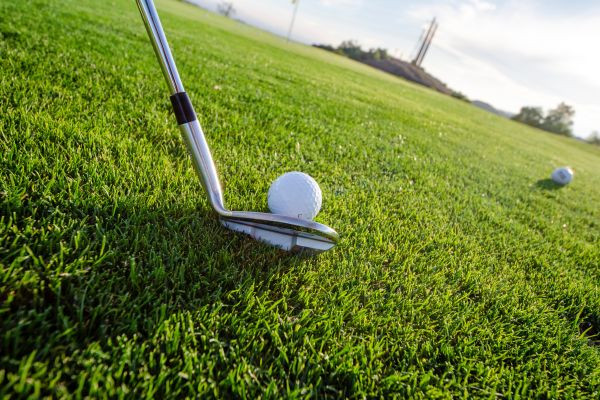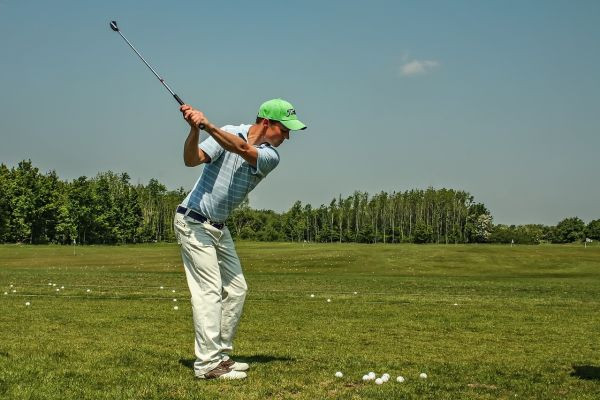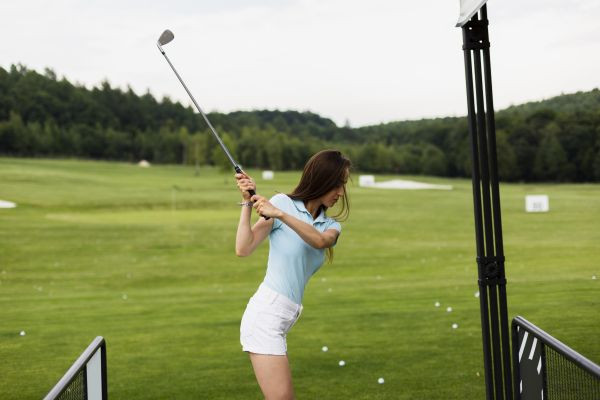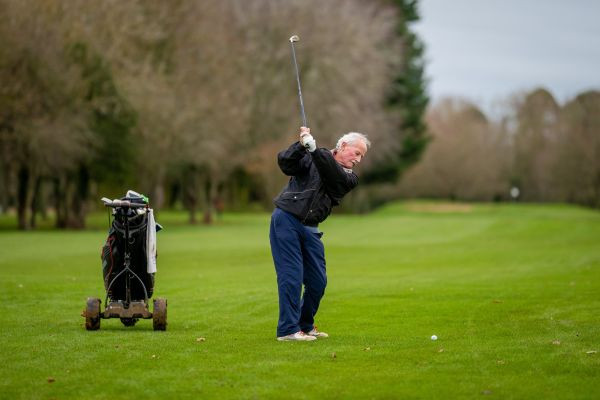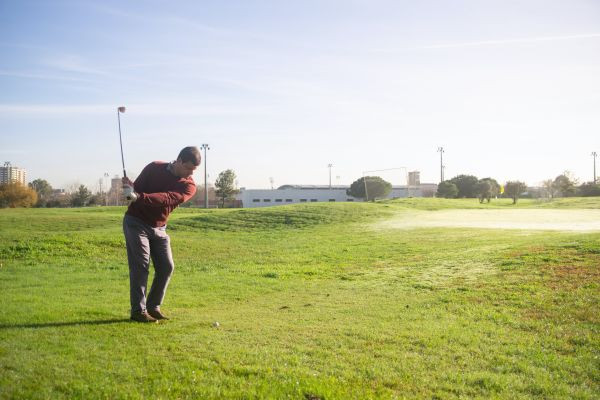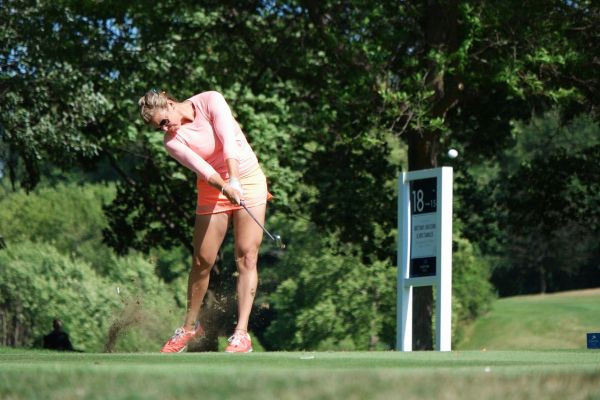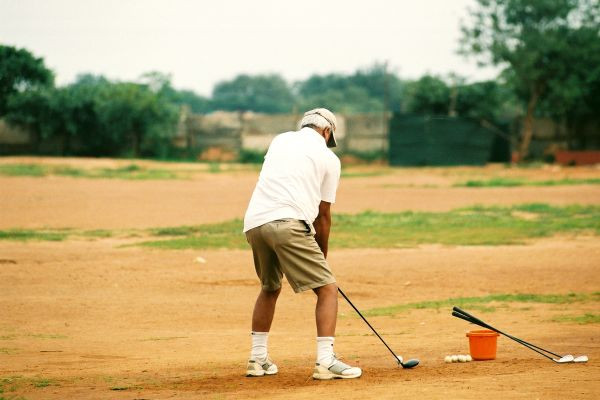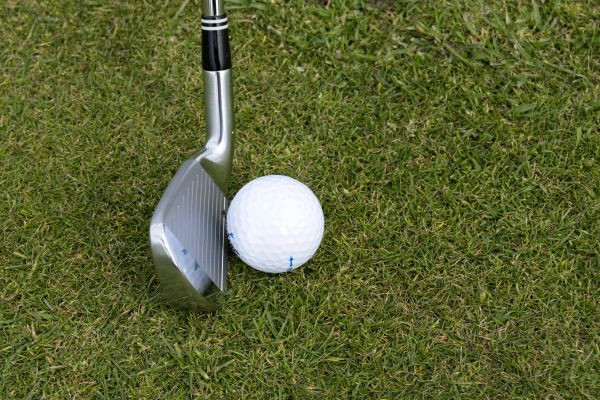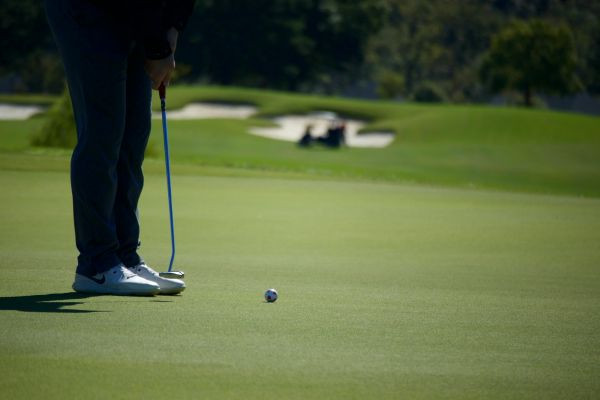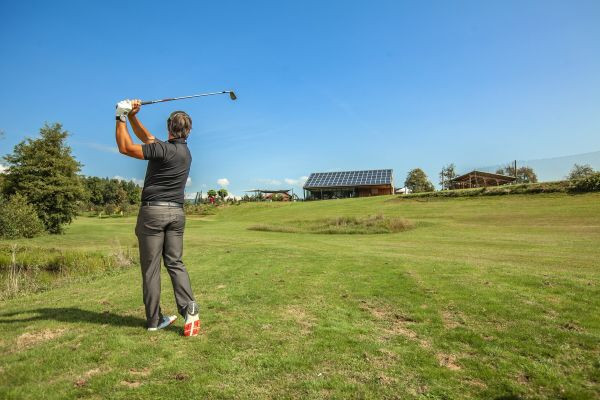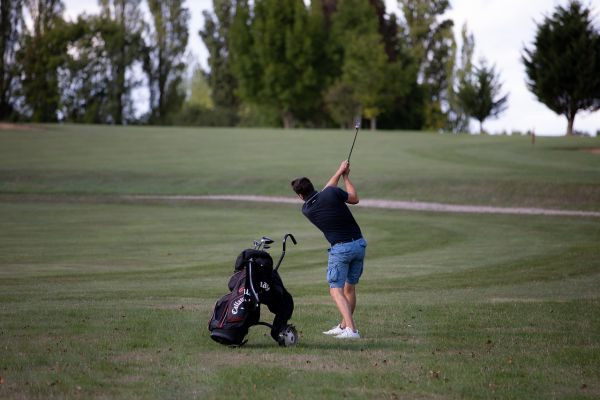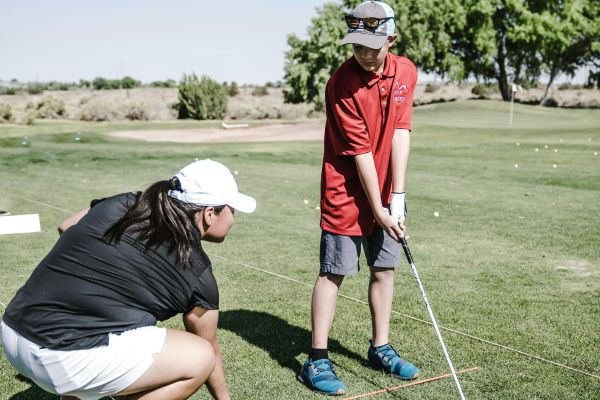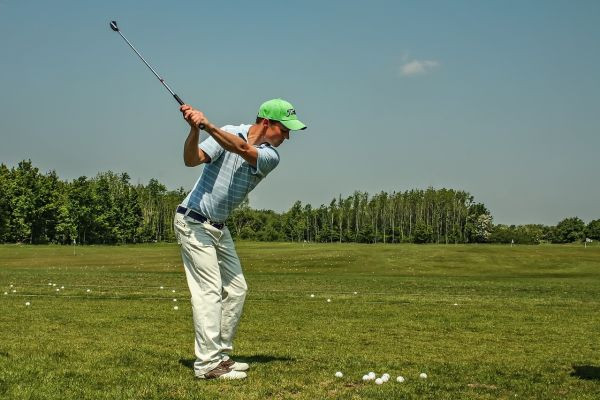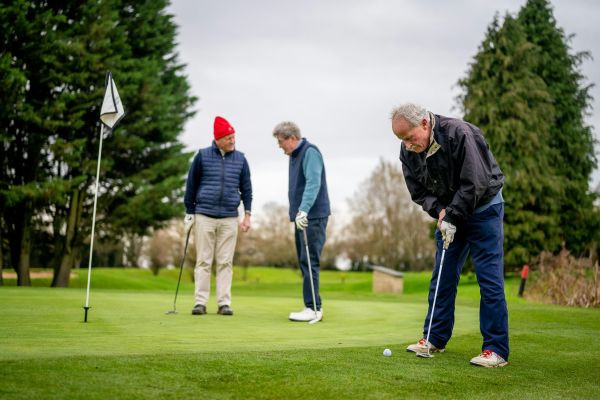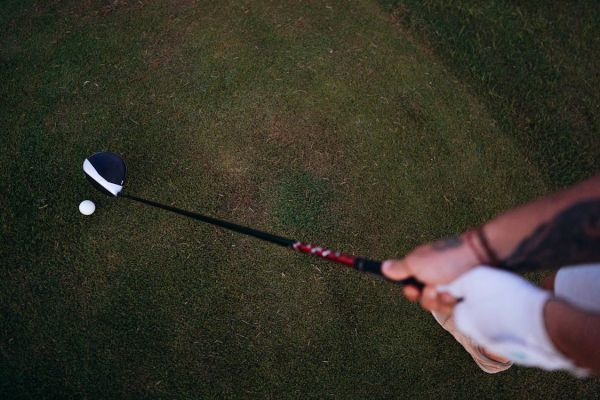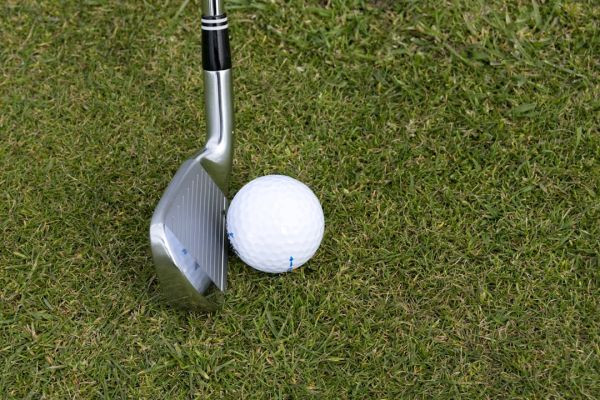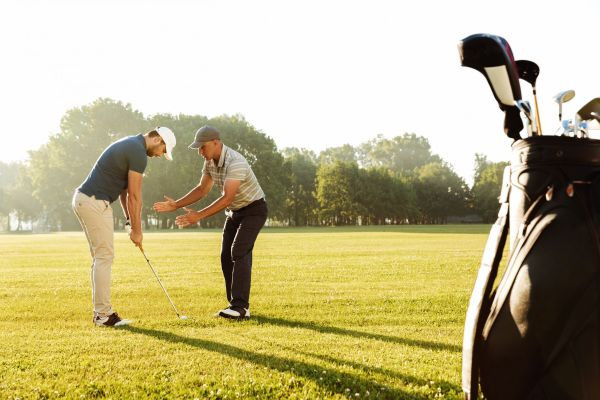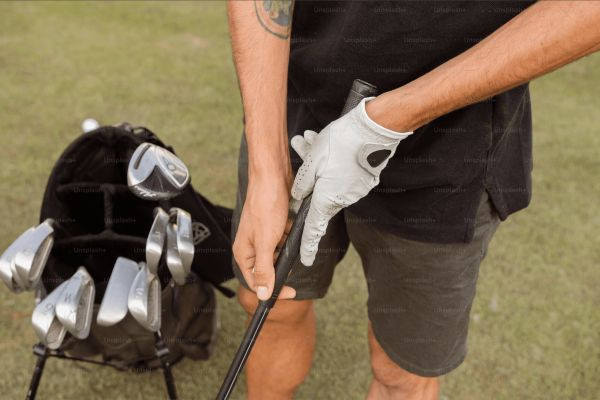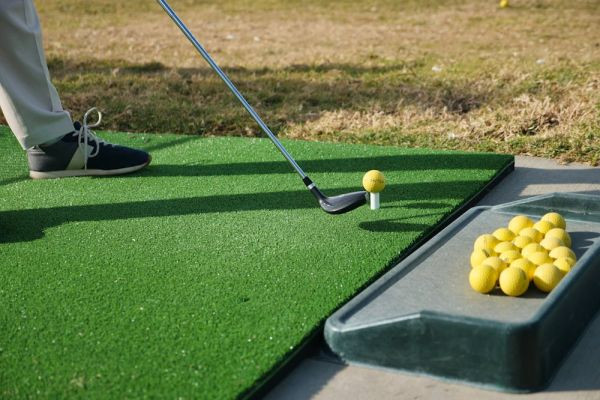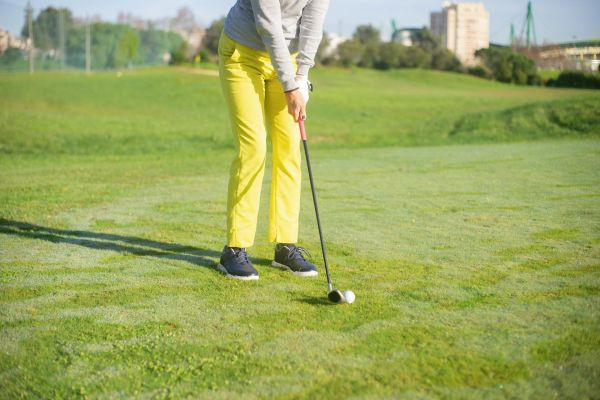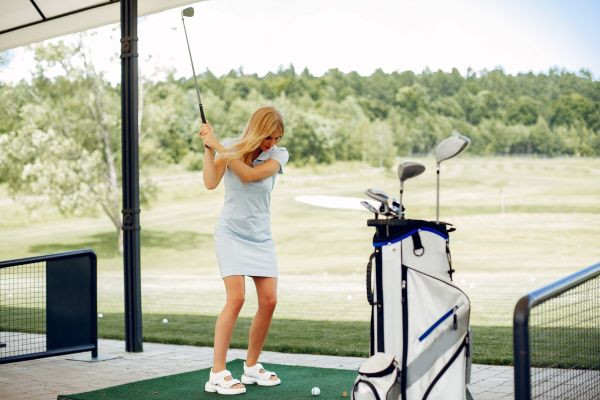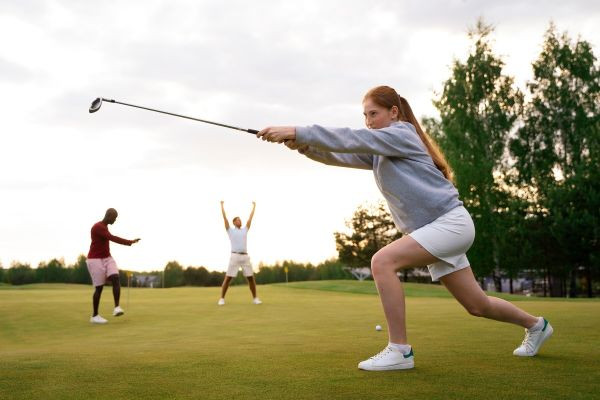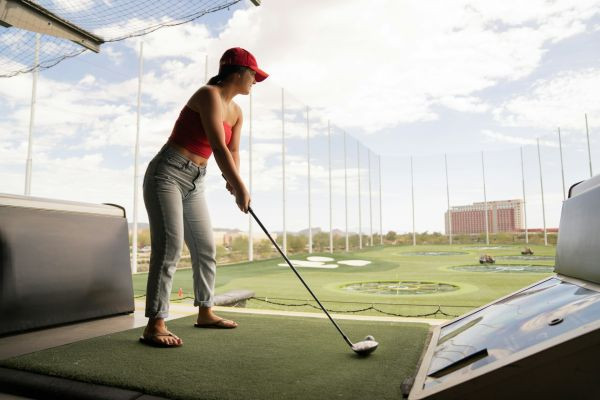Simple Drills to Correct Your Hip Sway
Hip sway might seem like a small detail in the grand scheme of your golf swing but its impact can be significant. When we talk about hip sway we're referring to that lateral movement of your hips movi..

Hip sway might seem like a small detail in the grand scheme of your golf swing but its impact can be significant. When we talk about hip sway we're referring to that lateral movement of your hips moving away from the target as you pull back for the swing. This movement might feel natural to many golfers, especially beginners but it's a common flaw that can drastically affect the power accuracy and consistency of your swing.
Imagine a line drawn perpendicular to the target line passing through your hips as you begin your swing. Ideally your hips should pivot around this line without any movement. Hip sway occurs when your hips stray beyond this boundary shifting closer to your foot. This side to side movement not only disrupts the smoothness of your swing but also undermines the stability crucial for a solid impact with the ball.
You might be curious about why we emphasize correcting hip sway. The answer lies in the essence of a golf swing; stability, power and precision. Addressing hip sway offers advantages, such as enhanced balance and command over your swing. It's about honing a swing that feels robust yet effortless, where each action serves a purpose with efficiency. Furthermore eliminating hip sway can significantly boost your capacity to generate power ensuring that your energy is channeled towards propelling the ball accurately.
Role of Hips in Golf Swing
Your hips act as the link between the movements of your upper body, during a golf swing. The hips play a role in your golf swing providing the power needed to drive your arms and club forward through impact.
Proper hip rotation is key to a powerful swing allowing you to generate force when striking the ball. Visualize your hips as the conductor of an orchestra orchestrating every movement in sync to create a flawless shot.
Common Mistakes Leading to Hip Sway
Hip sway can creep into your swing for several reasons:
Poor Posture: Incorrect spinal alignment can lead to swaying as you try to maintain balance during your swing.
Lack of Flexibility: Tightness in the hips or lower back can limit your rotation causing you to compensate with movements.
Incorrect Weight Transfer: Not shifting weight correctly between legs can result in sliding or rotating.
Identifying these factors is crucial for improvement. Each issue has its solution whether it's adjusting your posture or incorporating flexibility exercises into your training routine. Understanding the root cause of swaying is essential, for making corrections and enhancing the power and accuracy of your golf swings.
Drills to Correct Your Hip Sway
Drill #1: Wall Press for Stability
- Stand against a wall with your feet shoulder width apart ensuring you're in a stance similar to how you'd position yourself for a swing.
- Press your lower back gently against the wall aiming to create a curve in your lower spine without applying excessive force.
- Practice your golf swing motion without using a club. Focus on keeping your hips from swaying and ensure they remain clear of the wall. Your hips should rotate smoothly instead of swaying.
How It Helps: This exercise is great for maintaining an angle during your swing. It helps prevent swaying by providing feedback (the wall) if your hips move laterally. With practice you'll build muscle memory for the movement improving the stability of your swing.
Drill #2: Towel Under Foot Drill
- Place a towel on the ground and step on it with your trailing foot – The left foot for handed golfers and vice versa.
- Set up to address the ball as usual making sure the towel is securely under your foot.
- When you swing, focus on keeping the towel down with your foot. The aim is to prevent it from moving or bunching up which shows that your foot—and, as a result, your hip—is stable.
How It Helps: This exercise may seem simple but is highly effective. By stopping your foot from sliding it addresses an issue of hip movement. It also encourages weight transfer and hip rotation for a strong and more accurate swing.
Drill #3: Chair Pivot Exercise
- Position a chair near your hip in a way that hitting it with a sway free swing would be impossible.
- During your backswing try to pivot your hips so they almost touch the chair without making contact.
- This motion should feel more like a rotation than a side to side shift helping you start the downswing correctly with your hips.
How It Helps: The chair drill is great for guiding the swing path and starting the downswing, with hip action. It naturally reduces swaying tendencies. Significantly enhances the efficiency and flow of your swing.
Integrating Drills into Your Routine
Adding these drills to your training routine goes beyond repeating them; it's about staying focused and making gradual advancements. Begin by setting aside a portion of your practice time for these exercises concentrating on the precision of each motion. As you grow more at ease up the difficulty and intensity of each drill to keep challenging yourself.
Using video analysis can make an impact on monitoring your development. Filming your swing lets you visually verify if there's any hip movement and evaluate how well you're applying the principles of the drills. This instant feedback loop speeds up your learning process enabling you to make tweaks in time.
Tips for Maintaining Hip Stability
Here are some tips on how to improve the stability of the hips.
Securing hip stability not only applies to golf but also prevails over your overall physical condition. Developing a strong mind-to-muscle connection is essential if you want to not only move the muscles but also understand them and feel what muscles perform given actions.
Inserting strength training into your practicing sequence really can better this connection significantly. Do not forget to lay emphasis on core and hip exercises, these things are fundamental in your golf swing to create more strength. Squats, lunges and deadlifts should be fundamental here. They put the foundation for your golf swing, as you are basically training lower body strength.
In addition, try to do planks and hip-thrusts, as they specifically train the core and hip muscles, both of them are crucial in your swing.
Conclusion
To sum up, it's essential to fix hip sway for a strong and even golf swing. If you integrate these intelligent drills into your daily training, your hips will significantly boost in two key ways: stability and rotation. The only thing you need to keep in mind is to be patient and disciplined as you go ahead. You should practice on a daily basis to achieve the progress that you seek. Only by challenging yourself on a regular basis will you be able to improve your game to such an extent that it will amaze even yourself.
Frequently Asked Questions (FAQs)
How often should I practice these drills?
For significant enhancements try adding these training exercises to your practice times 3-4 times a week. Continually repeating the proper gestures is important for you to remember it well and to make progress on your swing.
When can I expect to see improvements in my swing?
Changes in performance may become apparent after a few weeks of continuous training although the duration may differ from golfer to golfer. Keep in constant enduring and determined effort and your swing could become stronger, more stable and powerful.
Can these drills help with back pain?
Yes, through the enhancement of hip flexibility and strengthening these exercises can effectively lessen the pressure exerted on your spine. The majority of golfers have testified that rectifying their lateral hip shift not only polishes their swings but also eradicates the soreness in their lower back thereby turning their game into a pleasing blissful ache-free experience.
Are these drills suitable for beginners?
Yes, the intention behind these exercises is to make them attainable and advantageous for all golfers regardless of their experience level. They concentrate on the basic components of a golf swing which are pivotal for anyone who is new to the sport or well-versed in it.
Can I do these drills at home?
Yes, what's great about these drills is that they don't require much space or equipment, making them perfect for practicing at home. Whether you're in your living room backyard or any open space you can effectively work on eliminating your hip sway.



